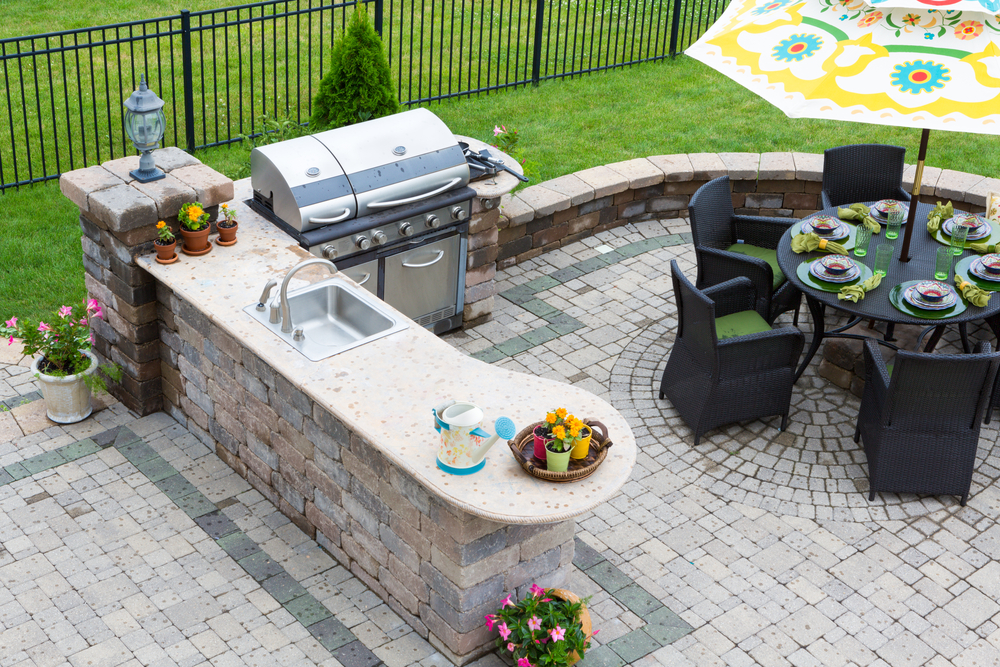If you’re looking for a way to elevate your outdoor space, entertain guests, and increase the value of your home, setting up an outdoor kitchen is the ultimate solution. In 2021, the global outdoor kitchen market size was valued at $19.64 billion and is expected to expand from 2022 to 2030 at a compound annual growth rate (CAGR) of 8.3 percent.
If you’re considering setting up an outdoor kitchen at home, you probably know that creating one requires much more thought and planning than simply setting up some lawn furniture and lighting a grill. Here are some of the most important tips for planning and designing the perfect outdoor kitchen for your space.
Choose the Right Size
There are a few things to consider when deciding the size of your outdoor kitchen. In addition to the space available in your yard or on your patio, you’ll want to think about what you want to use it for and how many people you plan to cook for. Whether you decide on a simple and efficient layout or something roomier, make sure there’s enough space for preparing, cooking, and serving food, as well as cleaning up. While the kitchen should be large enough for people to move around in easily, it shouldn’t be so large that it becomes inefficient.
Design a Functional Layout
While there are plenty of layout options for an outdoor kitchen, the space you have to work with will automatically narrow it down. The most common layouts include:
- Linear or straight-run
- Island
- Galley
- L-shaped
- U-shaped
While L- and U-shaped kitchens are perfect for larger areas, linear, island, and galley kitchens are more functional options for smaller spaces. When you’re considering the layout, make sure you plan for utilities and zones. You’ll need water, electricity, and gas, a hot zone for cooking, a dry zone for food preparation, a wet zone for the sink, and a cold area for refrigeration and ice.
Consider Cooking Styles and Methods
One of the best things about designing your own kitchen is that you can set it up to accommodate your favorite cooking style and method. Consider your favorite outdoor meals and what you’ll need to prepare them: a grill or charcoal barbecue, an outdoor brick oven, a tandoor, and a smoker are all options for cooking, and then there are appliances to consider as well.
Balance the Lighting
Balanced lighting can set your kitchen’s ambiance and further increase your home’s value. For practical purposes, you’ll need lighting to cook and serve properly once the sun goes down. For aesthetics, you’ll want to get more creative than setting up a spotlight. Consider installing task lighting above cooking and food prep zones, landscape lighting in the floor, and dimmable lights hung from an awning or pergola roof.
Set Plenty of Seating
Apart from increasing the value of your home, the whole purpose of building an outdoor kitchen is to have a place to entertain family and friends, so it’s crucial to consider the seating in and around the kitchen. At the very least, you should have a sturdy dining table that’s large enough to present your spread and seat your guests. Take the style up a notch by considering a custom-designed table in stone, marble, wood, or concrete. If you have enough room, create a relaxed nook outfitted with lounge chairs, couches, or armchairs for a super-cozy space.

